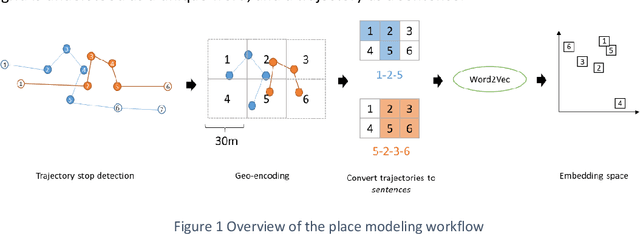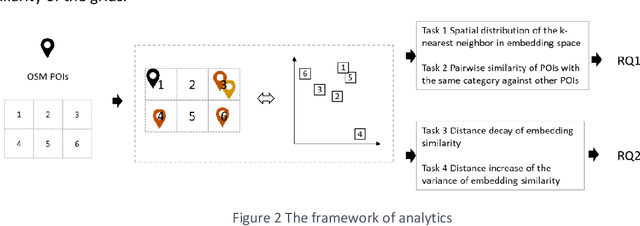Measuring Place Function Similarity with Trajectory Embedding
Paper and Code
Oct 31, 2020



Modeling place functions from a computational perspective is a prevalent research topic. The technology of embedding enables a new approach that allows modeling the function of a place by its chronological context as part of a trajectory. The embedding similarity was previously proposed as a new metric for measuring the similarity of place functions, with some preliminary results. This study explores if this approach is meaningful for geographical units at a much smaller geographical granularity compared to previous studies. In addition, this study investigates if the geographical distance can influence the embedding similarity. The empirical evaluations based on a big vehicle trajectory data set confirm that the embedding similarity can be a metric proxy for place functions. However, the results also show that the embedding similarity is still bounded by the distance at the local scale.
 Add to Chrome
Add to Chrome Add to Firefox
Add to Firefox Add to Edge
Add to Edge